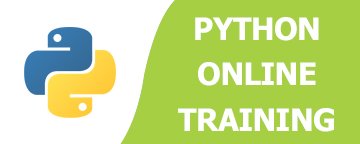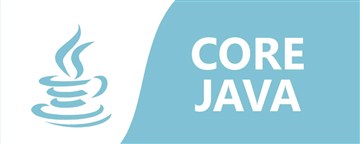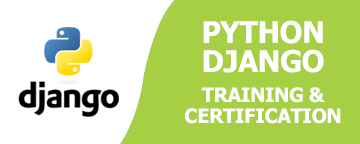About Course
Python Advanced Course:
Python is a widely used general-purpose programming language embraced by major players like Facebook, Netflix, Spotify, and Instagram. Its applications range from simple scripting tasks to complex web applications and artificial intelligence. Recognized as one of the most powerful and versatile programming languages, Python continues to experience exponential growth in demand for programming skills. Learning Python is considered relatively easy thanks to its extensive libraries and numerous powerful frameworks. Aspiring developers and seasoned programmers alike can easily grasp Python programming due to its abundance of resources and tools.
QA Training Hub: The Top QA Training Institute
QA Training Hub offers advanced Python online training in various locations in India, including Hyderabad, Bangalore, Pune, Chennai, and Gurgaon, as well as worldwide in the USA and UK. Our training program is designed to provide comprehensive knowledge and hands-on experience in Python.
With our Python online training, students will gain a deep understanding of Python syntax and acquire practical skills in project development. Our program covers the basics, significance, and installation of Python, as well as machine learning algorithms, file and sequence operations, and other important concepts.
Our Python course is not limited to specific roles. It is suitable for BI managers, project managers, analytics and Big Data professionals, and software developers who want to enhance their Python skills and stay updated with the latest industry trends.
Join the QA Training Hub to gain valuable knowledge and skills in Python. Our expert trainers will guide you through the learning process, providing comprehensive insights and real-world examples. Elevate your Python skills and advance your career with our advanced Python online training.
Python Online Training
QATRAININGHUB provides best comprehensive online training solutions to IT professionals, Freshers.
Introduction to Python Online Training :
Python programming – Python is a popular programming language which can be used for development of web, software and scientific applications.
Python offers high readability, balance of high level and low level programming, language interoperability, correct data structures and low-barrier-to-entry testing framework.
QA Training Hub’s python online training helps students to understand the syntax and gain hands-on experience in project development.
Our Python online training program provides adequate exposure to students on the basics, significance and installation of python, helps to know about machine learning algorithms in python, file and sequence operations and others.
QA Training Hub’s python course can be availed by BI managers and project managers, analytics an Big Data professionals and software developers.
Why QATRAININGHUB is best for Python Training?
Python Online Training Classes are taken by Realtime Industry Experts Realtime Trainers :
Mr. Dinesh Raju(Data Scientist & RPA Expert – 18+ Years Of Exp) and
Mr.Mohan(10+ Years Of Exp)
QATRAININGHUB’s Python Online Course Highlights
- Python Live classes taken by Mr.Dinesh Raju
- Completely Face 2 Face with Good Ascent & HD Quality python training
- Daily 1.5 Hour python live training
- Daily 1 Hr python Regular Classes + 0.5 Hr Python Realtime Examples Covered
- Soft Material will be provided
- Huge Examples & Daily Exercises with FAQ’s
- Python training classes are will be completed by as per the schedule
- After completion of python online course – python certification / python online certification will be provided
- 100% Course Worthy @ Python Scripting Online Course
QATRAININGHUB is the Best Python Training Institute
You Need to Know these about py programming..!
- Python version 3.6.4 is available 2017-12-19
- Official Website is https://www.python.org
- You can read more about these scripting / programming language
- created in the early 1990s
- by Guido van Rossum at Stichting Mathematisch Centrum in the Netherlands
- it’s a successor of a language called ABC
- pithon py Available platforms
- IOS
- Windows
- OS/390
- z/OS
- Solaris
- VMS
- HP – UX
- py Libraries
- PySoy
- SciPy
- SymPy
- Twisted
- Web Planets
- CherryPy
- Django Community
- Plone
- Turbogears
- Other Languages
- Haskell
- Lisp
- Parrot
- Perl
- Ruby
Database Supported – MySQL & PostgreSQL
Course Content
Introduction to Script
-
What is SCRIPT
-
What is a program?
-
Types of Scripts
-
Difference between Script & Programming Languages
-
Features of Scripting
-
Limitation of Scripting
-
Types of programming Language Paradigms
Introduction to Python
-
What is Python?
-
Why Python?
-
Who Uses Python?
-
Characteristics of Python
-
History of Python
-
What is PSF?
-
Python Versions
-
How to Download
-
How to Install Python
-
Install Python with Diff IDEs
-
Features of Python
-
Limitations of Python
-
Python Applications
-
Creating Your First Python Program
-
Printing to the Screen
-
Reading Keyboard Input
-
Using Command Prompt and GUI or IDE
-
Python Distributions
Different Modes in PYTHON
-
Execute the Script
-
Interactive Mode
-
Script Mode
-
Python File Extensions
-
SETTING PATH IN Windows
-
Clear screen inside python
-
Learn Python Main Function
-
Python Comments
-
Quit the Python Shell
-
Shell as a Simple Calculator
-
Order of operations
-
Multiline Statements
-
Quotations in Python
-
Python Path Testing
-
Joining two lines
-
Python Implementation Alternatives
-
Python Sub Packages
-
Uses of Python in Data Science
-
USES OF PYTHON IN IOT
-
Working with Python in Unix/Linux/Windows/Mac/Android..!!
PYTHON NEW IDEs
-
PyCharm IDE
-
How to Work on PyCharm
-
PyCharm Components
-
Debugging process in PyCharm
-
PYTHON Install Anaconda
-
What is Anaconda?
-
Coding Environments
-
Spyder Components
-
General Spyder Features
-
Spyder Shortcut Keys
-
Jupyter Notebook
-
What is Conda?
-
Conda List?
-
Jupyter and Kernels
-
What is PIP?
Variables in Python
-
What is Variable?
-
Variables in Python
-
Constants in Python
-
Variable and Value
-
Variable names
-
Mnemonic Variable Names
-
Values and Types
-
What Does “Type” Mean?
-
Multiple Assignment
-
Python different numerical types
-
Standard Data Types
-
Operators and Operands
-
Order of Operations
-
Swap variables
-
Python Mathematics
-
Type Conversion
-
Mutable Versus Immutable Objects
String Handling in Python
-
String Handling
-
What is string?
-
String operations
-
String indices
-
Basic String Operations
-
String Functions, Methods
-
Delete a string
-
String Multiplication and concatenation
-
Python Keywords
-
Python Identifiers
-
Python Literals
-
String Formatting Operator
-
Structuring with indentation in Python
-
Built-in String Methods
-
Define Data Structure?
-
Data Structures in PYTHON
Python Operators and Operands
-
Arithmetic Operators
-
Relational Operators
-
Comparison Operators
-
Python Assignment Operators
-
Short hand Assignment Operators
-
Logical Operators or Bitwise Operators
-
Membership Operators
-
Identity Operators
-
Operator precedence
-
Evaluating Expressions
Python Conditional Statements
-
How to use “if condition” in conditional structures
-
if statement (One-Way Decisions)
-
if .. else statement (Two-way Decisions)
-
How to use “else condition”
-
if .. elif .. else statement (Multi-way)
-
When “else condition” does not work
-
How to use “elif” condition
-
How to execute conditional statement with minimal code
-
Nested IF Statement
Python LOOPS
-
How to use “While Loop”
-
How to use “For Loop”
-
How to use For Loop for set of other things besides numbers
-
Break statements in For Loop
-
Continue statement in For Loop
-
Enumerate function for For Loop
-
Practical Example
-
How to use for loop to repeat the same statement over and again
-
Break, continue statements
Learning Python Strings
-
Accessing Values in Strings
-
Various String Operators
-
Some more examples
-
Python String replace() Method
-
Changing upper and lower case strings
-
Using “join” function for the string
-
Reversing String
-
Split Strings
Sequence or Collections in PYTHON
-
Strings
-
Unicode Strings
-
Lists
-
Tuples
-
Buffers
-
xrange
Python Lists
-
Lists are mutable
-
Getting to Lists
-
List indices
-
Traversing a list
-
List operations
-
List slices
-
List methods
-
Map, filter and reduce
-
Deleting elements
-
Lists and strings
Python TUPLE
-
Advantages of Tuple over List
-
Packing and Unpacking
-
Comparing tuples
-
Creating nested tuple
-
Using tuples as keys in dictionaries
-
Deleting Tuples
-
Slicing of Tuple
-
Tuple Membership Test
-
Built-in functions with Tuple
-
Dotted Charts
Python Sets
-
How to create a set?
-
Iteration Over Sets
-
Python Set Methods
-
Python Set Operations
-
Union of sets
-
Built-in Functions with Set
-
Python Frozenset
Python Dictionary
-
How to create a dictionary?
-
PYTHON HASHING?
-
Python Dictionary Methods
-
Copying dictionary
-
Updating Dictionary
-
Delete Keys from the dictionary
-
Dictionary items() Method
-
Sorting the Dictionary
-
Python Dictionary in-built Functions
-
Dictionary len() Method
-
Variable Types
-
Python List cmp() Method
-
Dictionary Str(dict)
Python Functions
-
What is a function?
-
How to define and call a function in Python
-
Types of Functions
-
Significance of Indentation (Space) in Python
-
How Function Return Value?
-
Types of Arguments in Functions
-
Default Arguments
-
Non-Default Arguments
-
Keyword Arguments
-
Non-keyword Arguments
-
Arbitrary Arguments
-
Rules to define a function in Python
-
Various Forms of Function Arguments
-
Scope and Lifetime of variables
-
Nested Functions
-
Call By Value, Call by Reference
-
Anonymous Functions/Lambda functions
-
Passing functions to function
-
map(), filter(), reduce() functions
-
What is a Docstring?
Python Modules
-
What is a Module?
-
Types of Modules
-
The import Statement
-
The from…import Statement
-
from…import * Statement
-
Underscores in Python
-
The dir( ) Function
-
Creating User defined Modules
-
Command line Arguments
-
Python Module Search Path
Packages in Python
-
What is a Package?
-
Introduction to Packages?
-
__init__.py file
-
Importing module from a package
-
Creating a Package
-
Creating Sub Package
-
Importing from Sub-Packages
-
Popular Python Packages
Python Date & Time
-
Python Date & Time
-
How to Use Date & DateTime Class
-
How to Format Time Output
-
How to use Timedelta Objects
-
Calendar in Python
-
datetime classes in Python
-
How to Format Time Output?
-
The time Module
-
Python Calendar Module
-
Python TextCalendar
-
Python HTMLCalendar Class
-
Unix Date and Time Commands
File Handling in Python
-
What is a data, Information File?
-
File Objects
-
File Different Modes
-
File Object Attributes
-
How to create a Text File
-
How to Append Data to a File
-
How to Read a File
-
Closing a file
-
Read, read line ,read lines, write, write lines…!!
-
Renaming and Deleting Files
-
Directories in Python
-
Working with CSV files
-
Working with CSV Module
-
Handling IO Exceptions
Python OS Module
-
Shell Script Commands
-
Various OS operations in Python
-
Python File System Shell Methods
Python Exception Handling
-
Python Exception Handling
-
Python Errors
-
Common RunTime Errors in PYTHON
-
Abnormal termination
-
Chain of importance Of Exception
-
Exception Handling
-
Try … Except
-
Try .. Except .. else
-
Try … finally
-
Argument of an Exception
-
Python Custom Exceptions
-
Ignore Errors
-
Assertions
-
Using Assertions Effectively
More Advanced PYTHON
-
Python Iterators
-
Python Generators
-
Python Closures
-
Python Decorators
-
Python @property
Python Class & Objects
-
Introduction to OOPs Programming
-
Object Oriented Programming System
-
Object Oriented Programming System
-
Define Classes
-
Creating Objects
-
Class variables and Instance Variables Constructors
-
Basic concept of Object and Classes
-
Access Modifiers
-
How to define Python classes
-
Python Namespace
-
Self-variable in python
-
Garbage Collection
-
What is Inheritance? Types of Inheritance?
-
How Inheritance works?
-
Python Multiple Inheritance
-
Overloading and Over Riding
-
Polymorphism
-
Abstraction
-
Encapsulation
-
Built-In Class Attributes
Python Regular Expressions
-
What is Regular Expression?
-
Regular Expression Syntax
-
Understanding Regular Expressions
-
Regular Expression Patterns
-
Literal characters
-
Repetition Cases
-
Example of w+ and ^ Expression
-
Example of s expression in re.split function
-
Using regular expression methods
-
Using re.match()
-
Finding Pattern in Text (re.search())
-
Using re.findall for text
Python XML Parser
-
What is XML?
-
Difference between XML and HTML
-
Difference between XML and JSON and Gson
-
How to Parse XML
-
How to Create XML Node
-
Python vs JAVA
-
XML and HTML
Python-Data Base Communication
-
What is Database? Types of Databases?
-
What is DBMS?
-
What is RDBMS?
-
What is Big Data? Types of data?
-
Oracle
-
MySQL
-
SQL server
-
Executing the Queries
-
Executing DML Operations..!!
Multi-Threading
-
What is Multi-Threading
-
Threading Module
-
Defining a Thread
-
Thread Synchronization
-
Serial Programming
Intro to Web scrapping
-
The components of a web page
-
BeautifulSoup
-
HTML, CSS, JS, jQuery
-
Dataframes
-
Installing External Modules Using PIP
Intro to Data Analytics
-
Introduction to data Big Data?
-
Introduction to NumPY and SciPY
-
Introduction to Pandas and MatPlotLib
Introduction to Machine Learning with PYTHON
-
What is Machine learning?
-
Machine Learning Methods
-
Predictive Models
-
Descriptive Models
-
What are the steps used in Machine Learning?
-
What is Deep Learning?
Intro to Data Science
-
Intro to Data Science
-
What is Data Science?
-
Data Science Life Cycle?
-
What is Data Analysis
-
What is Data Mining
-
Analytics vs Data Science
Intro to Internet of Things
-
IMPACT OF THE INTERNET
-
What is IOT
-
History of IoT
-
What is Network?
-
What is Protocol?
-
What is smart?
-
How IoT Works?
-
The Future of IoT
Course PDF
Download PDF




